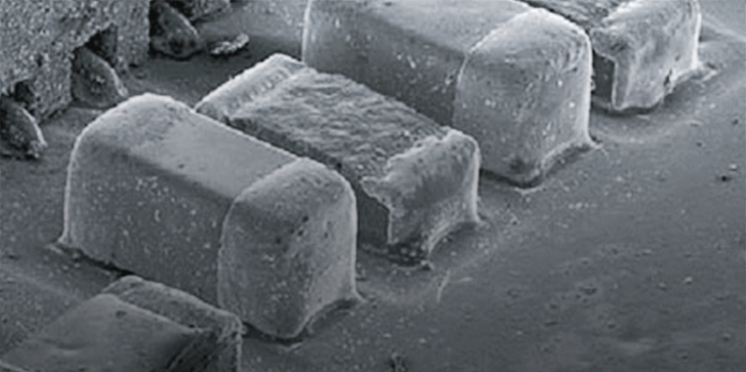envelope function
envelope function
The phase-contrast transfer function plays an important role for the resolution of an HREM image contrast. Another important factor is the envelope function. The phase contrast is damped with increase of scattering angle due to chromatic aberration of the objective lens caused by energy difference in the electron beam, the divergence angle of the electron beam, stability of the objective lens, etc. The function that expresses the damping is called "envelope function." The spatial frequency at which the envelope function becomes practically 0 (zero) is called "information limit."

Example of an envelope function (black line) at an accelerating voltage of 200 kV. The horizontal axis stands for the spatial frequency and the amount of information on the crystal structure of a specimen transferred to a TEM image. The closer the value of the envelope function to 1 (or –1), the more structural information on the specimen contributes to form a TEM image. The closer the envelope function to 0 (zero), the more structural information is lost.
The envelope function expresses the degree of coherence of the scattered waves, which is determined by chromatic aberration, angular spread of an incident electron beam, etc. When the chromatic aberration or angular spread is large, the degree of coherence of scattered waves deteriorates quickly with increase of spatial frequency, or the envelope function attenuates quickly to 0. The phase-contrast transfer function (PCTF) should incorporate the effect of the envelope function, then resulting to an actual PCTF as indicated by a gray line. This PCTF shows that the contribution of the scattered waves to the image formation damps with the spatial frequency.

Example of an envelope function (black line) at an accelerating voltage of 200 kV. The horizontal axis stands for the spatial frequency and the amount of information on the crystal structure of a specimen transferred to a TEM image. The closer the value of the envelope function to 1 (or –1), the more structural information on the specimen contributes to form a TEM image. The closer the envelope function to 0 (zero), the more structural information is lost.
The envelope function expresses the degree of coherence of the scattered waves, which is determined by chromatic aberration, angular spread of an incident electron beam, etc. When the chromatic aberration or angular spread is large, the degree of coherence of scattered waves deteriorates quickly with increase of spatial frequency, or the envelope function attenuates quickly to 0. The phase-contrast transfer function (PCTF) should incorporate the effect of the envelope function, then resulting to an actual PCTF as indicated by a gray line. This PCTF shows that the contribution of the scattered waves to the image formation damps with the spatial frequency.
Related Term(s)
Term(s) with "envelope function" in the description
Are you a medical professional or personnel engaged in medical care?
No
Please be reminded that these pages are not intended to provide the general public with information about the products.




